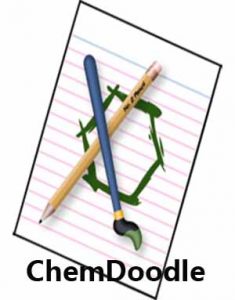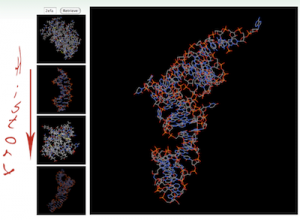

- #CHEMDOODLE SUPPORT UPDATE#
- #CHEMDOODLE SUPPORT FULL#
Additive Manufacturing File Format ĬhemDoodle 3D supports as much of each format as possible, including meshes, normals, materials, transparency, colors and multicolors. Export your ChemDoodle 3D creations into many popular 3D model file types for import into other CAD applications and for 3D printing:. The last major new feature is CIP stereochemistry support for cumulenes. 
We have also added support for three more RCSB formats: Binar圜IF, PDBx/mmCIF and PDBML. Many formats are supported, along with thorough mesh data output and options for each type. You can now export your created molecules and chemistry scenes into model files for 3D printing and other CAD applications.

#CHEMDOODLE SUPPORT UPDATE#
Stopped behavior where the bond deducer was executed for bonds beyond the ones defined in MMTF files.ĬhemDoodle 3D v6.5 is a feature update to ChemDoodle 3D. Improvements with XYZ file edge cases and reading of error files. Fixed bug when writing SLN strings where a bond order before a ring closure wasn't properly cleared. Fixed bug where turning on the optimizer could not be undone to restore original coordinates. Multicolor mesh support is included for 3MF model output, but be aware many programs may not be able to read or support such data. The result is a smoother descent toward a minimum than you would get using conjugate gradients or BFGS. This gives it a slight added push downwards and compensates for the inherent inaccuracies in any discrete process. Unlike a naive steepest descent approach where the momentum would be changed only by adding in the current force vector, in this method, the momentum is first steered partially toward the new downward direction before adding in the force. Instead, it moves in successive small time steps, tracking the momentum of each particle as it slides to a lower energy state. The FIRE optimizer differs from the other optimization methods described here in that it does not employ a line search. A new optimizer for the molecular modeling engine is implemented, FIRE (Fast Inertial Relaxation Engine). New bond order perception algorithms are now available, including "All Single", Antechamber and Auto-UFF. menu item or opening a file with no bond information. Bond deduction has been significantly improved, allowing options for enforcing maximum valencies and changing the bond distance tolerance when using the Molecule>Deduce Covalent Bonds. menu item, choose the mapping algorithm, whether to overlap the structures, or allow inversions. A new function to align molecular structures in 3D. While minimizations of several discrete structures using through-space forces may look correct, please understand the theory behind the force field you are using and that any force field not specifically developed or parameterized for intermolecular forces will not lead to experimentally accurate coordinates. Please note, while you are able to optimize the entire scene, most force fields are not parameterized for multiple discrete molecular structures, and you will be relying on the through-space forces defined in the force field (mainly van der Waals and electrostatic), if defined at all. To do this, you can change the optimization scope to optimize the entire scene. 
However, you may wish to optimize several discrete molecular structures at the same time and in relation to each other. ChemDoodle 3D therefore will optimize molecular structures separately and individually as you are editing them. Most small molecule force fields are optimized for describing individual discrete molecular structures.
#CHEMDOODLE SUPPORT FULL#
ChemDoodle 3D now allows full scene modeling simulations.Major new features include the ability to perform full scene modeling simulations, an implementation of the FIRE optimizer, 3D molecular structure alignment, improved bond deduction with new bond order perception algorithms, and more. ChemDoodle 3D v6.6 is a feature update to ChemDoodle 3D.








 0 kommentar(er)
0 kommentar(er)
